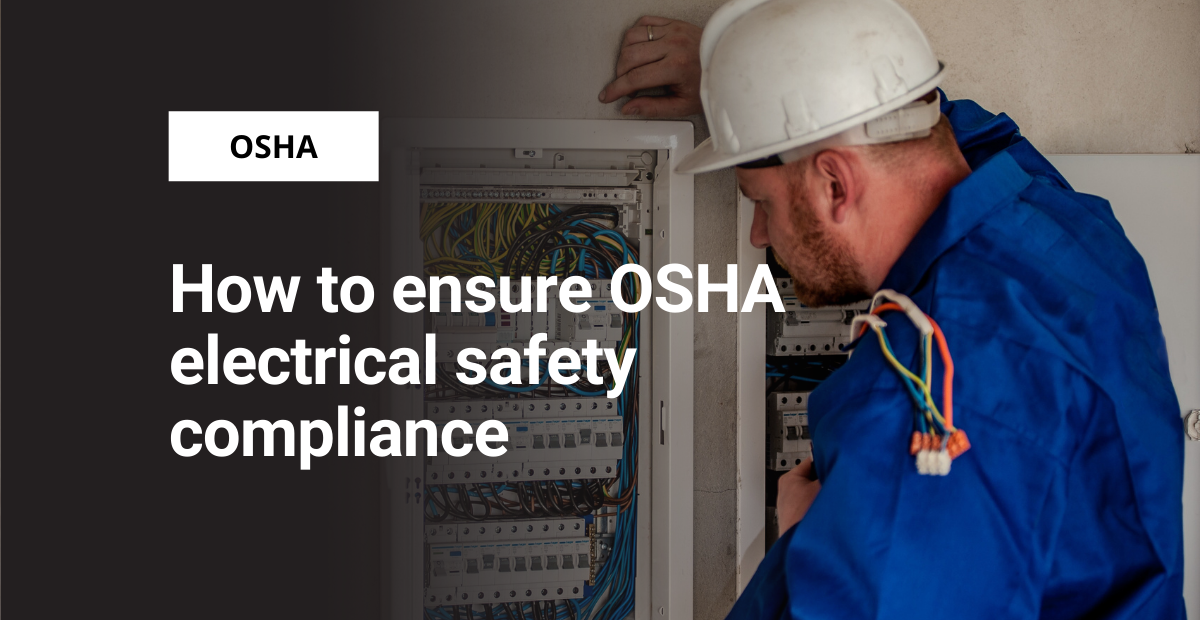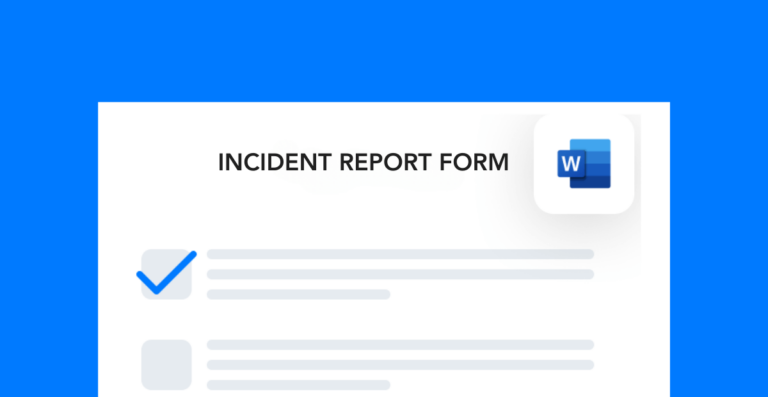Meet OSHA’s electrical safety compliance requirements by learning from common citations, reevaluating your safety protocols, and hiring qualified electricians for your facility. These practices, made easier with EHS management software, will protect your business and workers from incidents related to electrical hazards.
OSHA electrical standards
OSHA is the regulatory agency that oversees electrical safety compliance for all industries. It protects workers from electricity hazards like:
- Electrocution
- Explosions
- Arc flashes
- Fires
- Shocks
One of the top ten most frequently cited OSHA standards is the Control of Hazardous Energy (29 CFR 1910.147) standard. One of its main objectives is to protect workers from electrical power that might spontaneously turn on.
It is just one of several OSHA regulations that businesses must comply with. Here are some additional standards that deal with electrical safety compliance:
- 1910.137 – Discusses electrical personal protective equipment
- 1910.269 – Talks about the generation, transmission, and distribution of electric power
- 1915.181 – Covers electrical circuits and distribution boards
- 1917.157 – Provides details about changing and charging batteries
- 1926 Subpart K – Contains important electrical compliance regulations in the construction industry
- 1910 Subpart S – All the electrical guidelines for general industries
If you’re looking for a specific area of electrical safety compliance, use the OSHA website to search for keywords. For example, if you need to know more about electrical wiring, type “wiring” into the search bar on the “Laws and Regulations” page.
This will pull up all the standards and subparts that contain your topic or keyword. Continue to narrow down your search until you’ve found what you need. If you don’t know exactly what you’re looking for, try starting with the general categories found on the main page.
How do I make sure my business meets electrical safety standards?
Start by learning the electrical safety standards for your industry. OSHA’s regulations are divided among four main categories:
- General industry
- Construction
- Maritime
- Agriculture
Unless your business fits into categories 2, 3, or 4, you’re part of the “general industry” category. Subpart S contains the bulk of the electrical standards, including guidelines for wiring, hazardous locations, equipment installations, and more.
OSHA’s website has some great resources for preventing electricity-related incidents. The “Hazard Recognition” page includes a variety of content on recognizing and preventing electrical hazards. Some examples include:
- A guide to working near powerlines
- Instructions for using double-insulated tools
- Guidelines for inspecting and using flexible cords
Make sure to explore these resources and cross-reference them with your current safety training and procedures. How frequently do you perform hazard audits? How do you track whether action items are complete?
Implementing a cloud-based solution for all your compliance data can save you major amounts of time and money. With EHS software, you can do things like track lockout/tagout training completion, record electrical safety incidents, and manage both hazard analyses and their corresponding action items.
NFPA certification
Avoid safety incidents by hiring qualified electricians. One way to vet potential employees and contractors is to look for common certifications. The National Fire Protection Association (NFPA) offers high-quality certifications and courses. Some of these include:
- Certified Hazard Recognition Specialist (CHRS)
- Certified Electrical Safety Worker (CESW)
- Certified Electrical Safety Technician (CEST)
- Certified Electrical Safety Compliance Professional (CESCP)
NFPA is a non-profit organization, not a regulatory agency—meaning that NFPA certifications aren’t mandatory for OSHA compliance. Since they focus on the safety aspects of electrical work, however, these certifications can set candidates apart during the hiring process.
Learn more
To better explore electrical safety compliance guidelines, visit OSHA’s website here. Click on any of the subparts that pertain to your business for a more in-depth explanation.
If you want to learn more about corrective action software for electrical safety compliance, request a demo of Frontline EHS management solutions. We can answer any questions you might have on how to streamline your compliance approach and prevent workplace electrical incidents.




